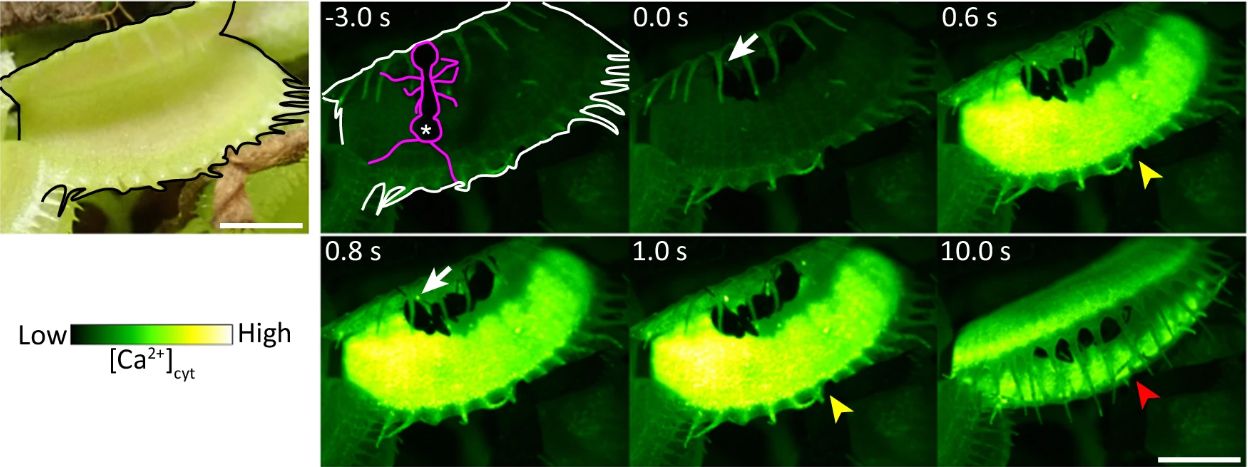Researchers have identified a key mechanosensor that enables the famous Venus flytrap, scientifically known as Dionaea muscipula, to react swiftly to prey. The findings, published in Nature Communications, reveal how the plant’s sensory hairs utilize calcium signals to trigger rapid movements, a mechanism that has intrigued scientists for years.
The study, led by Hiraku Suda and colleagues, focuses on the role of a specific ion channel named DmMSL10. This sensor is essential for the plant’s ability to detect minute mechanical stimuli. By creating a variant of the Venus flytrap that lacks this stretch-activated chloride ion channel, the research team was able to demonstrate the significant impact of DmMSL10 on the plant’s responsiveness.
Mechanosensor’s Role in Prey Detection
The sensory hairs lining the leaves of the Venus flytrap are finely tuned to respond to certain triggers. While it was previously understood that calcium ions play a role in this process, the specific mechanisms remained largely unclear. The new research indicates that DmMSL10 is critical for generating action potentials in response to slight stimuli.
When comparing the wild-type Venus flytrap to the knockout variant devoid of DmMSL10, researchers observed notable differences. Although both versions released calcium ions upon stimulation, the knockout variant exhibited a significantly reduced rate of action potential generation. This suggests that the wild-type can continue generating signals even after stimulation has ceased, enhancing its ability to capture prey.
In a striking experiment, ants were allowed to wander on the leaves of both plant types. The wild-type Venus flytrap captured the first ant almost immediately, while the knockout variant remained unresponsive, failing to trigger sufficient calcium signals to initiate the trap’s closure.
Implications for Understanding Plant Evolution
These findings not only shed light on the Venus flytrap’s predatory capabilities but also open new avenues for understanding the evolutionary parallels between plant and animal mechanisms. The ability to generate long-range calcium signals is crucial for these plants to effectively capture and digest their prey, which includes protein-rich insects.
The research highlights the intricate biological systems that allow such plants to thrive in their environments. Further studies are expected to delve deeper into how these mechanisms evolved, potentially revealing insights into the broader interactions between plants and their ecosystems.
As scientists continue to explore the fascinating world of carnivorous plants, the discovery of DmMSL10 stands out as a significant advancement in our understanding of plant biology and sensory responses.


































































